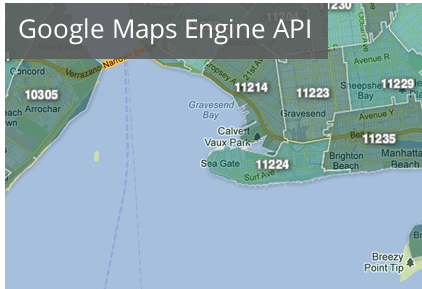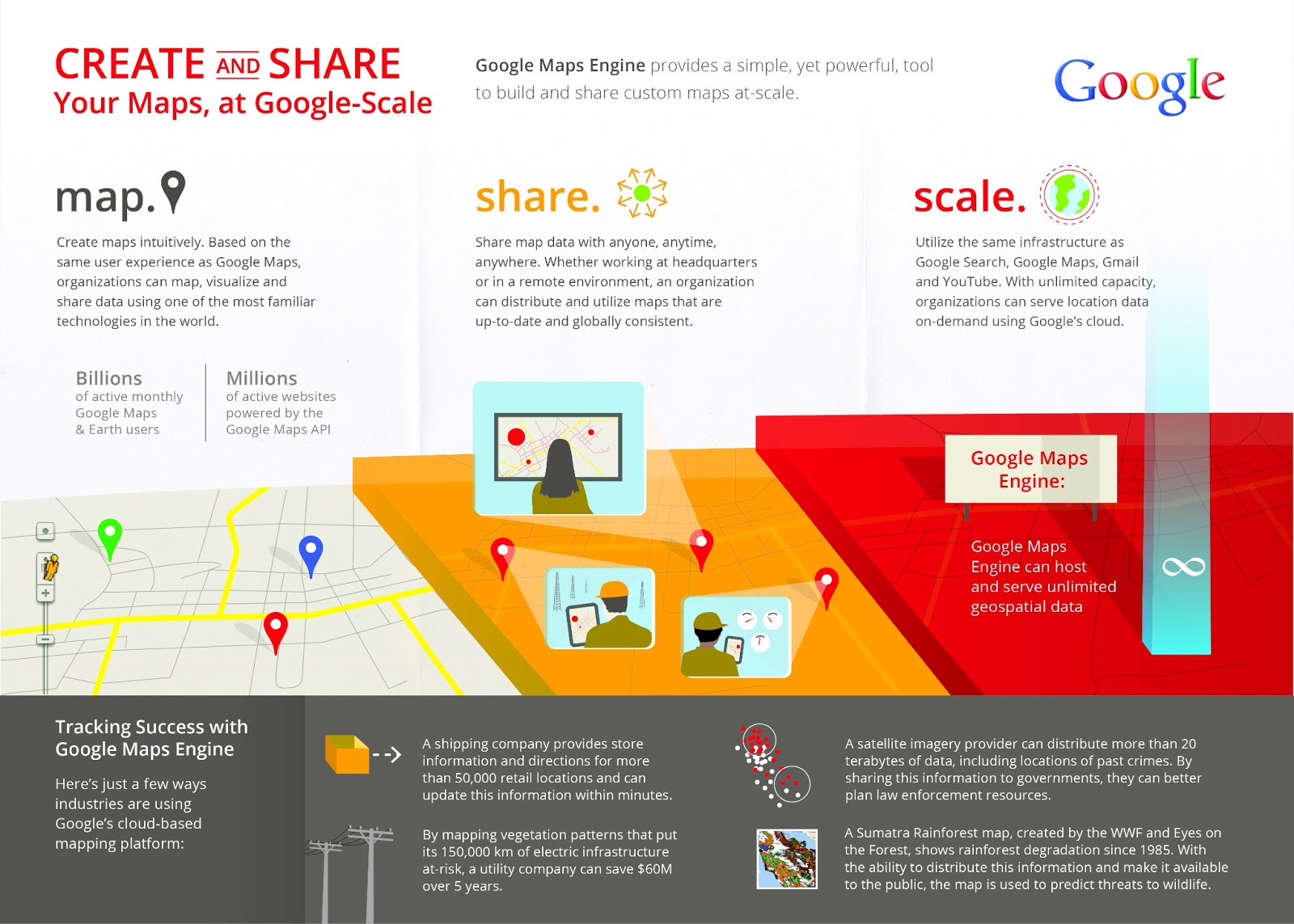Google’s Maps Engine, its enterprise-focused service for developers who need to be able to create their own maps based on custom data, launched about two years ago and has been available commercially since last year. Today, Google is adding more functionality to the platform by launching an API for Maps Engine that allows developers to take their custom data, import it into Maps Engine and then use it in their own applications. The idea here, Google tells me, is to let organizations use Google’s fast mapping cloud infrastructure to layer their data on top of Google Maps and share them with their employees and customers.
You may be thinking that Google already has a Maps API, but as Dylan Lorimer, Google’s product manager for the Maps Engine API, told me, the regular Maps API mostly focuses on giving developers access to Google’s own mapping content. The Maps Engine API is meant to handle developers’ own data. The whole system, by the way, runs on Spanner, Google’s distributed global database.
The API, which was previously considered “experimental,” allows enterprise developers to easily upload, read and modify their data programmatically. Thanks to this new API, Lorimer noted, developers can now create maps and customized applications that align with their brands and also expose their data to any developer they designate.
FedEx, for example, has been testing the API for a while now, and part of its store locator is already powered by it today. As FedEx IT manager Pat Doyle told me, the company has been using Maps Engine to power its store locator since January, after it decided to completely rearchitect its system to use Google’s services.
The company worked closely with Google on this and some of its ideas flowed into the Maps Engine API, including, for example, an easier way to do server-side sorting for results around a specific location. Using the API, FedEx currently updates its store hours for its more than 50,000 retail touch points, including its drop boxes and stores, every 15 minutes (each store currently has about 150 data points attached to it), so if a power outage or natural disaster closes a store, that will be reflected on the site within minutes.
As Doyle noted, the system has been 100 percent reliable so far, and the company’s analytics show that more of its users now find what they are looking for when they use the store locator. You can also see a bit more about how FedEx did this in this video.
The API currently only supports a somewhat limited slice of Maps Engines’ features, which also include basic spacial queries and manipulating vector data, but the team plans to expand the API quite a bit in the near future. Lorimer also stressed when I talked to him that Google has always been interested in bringing features like this to the larger developer community — that is, those without a pricey enterprise Maps Engine account. Google has nothing to announce about this right now, but it’s safe to assume that we will hear more about this API in the future.

